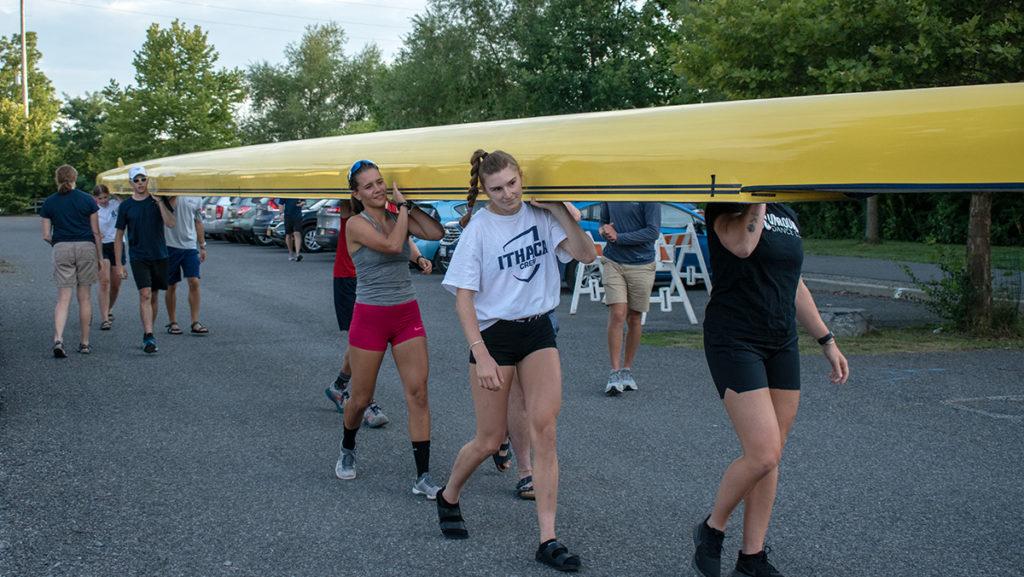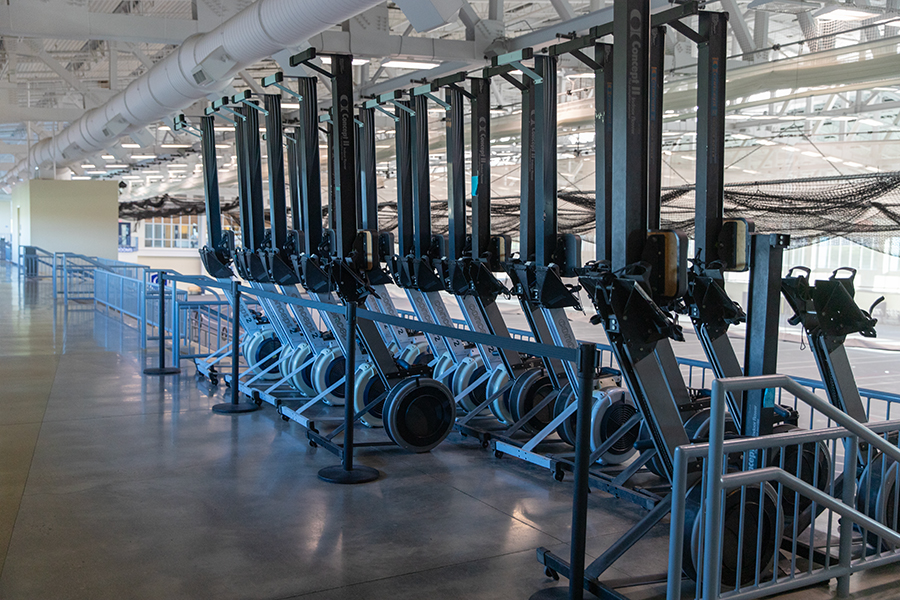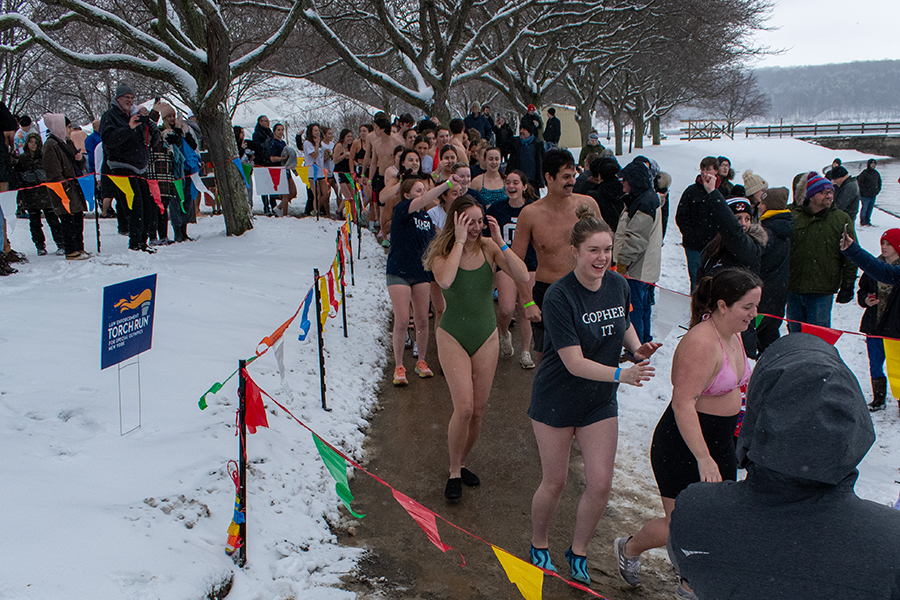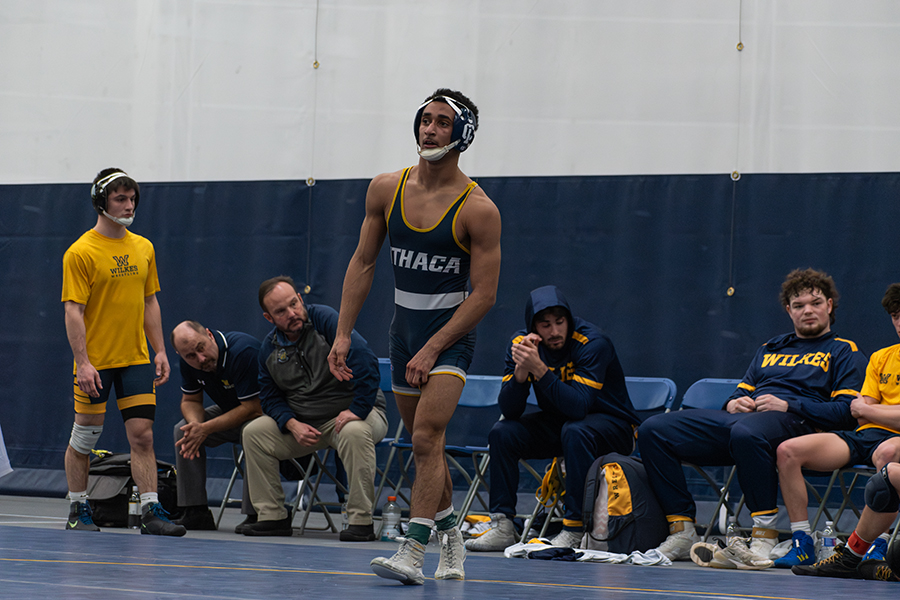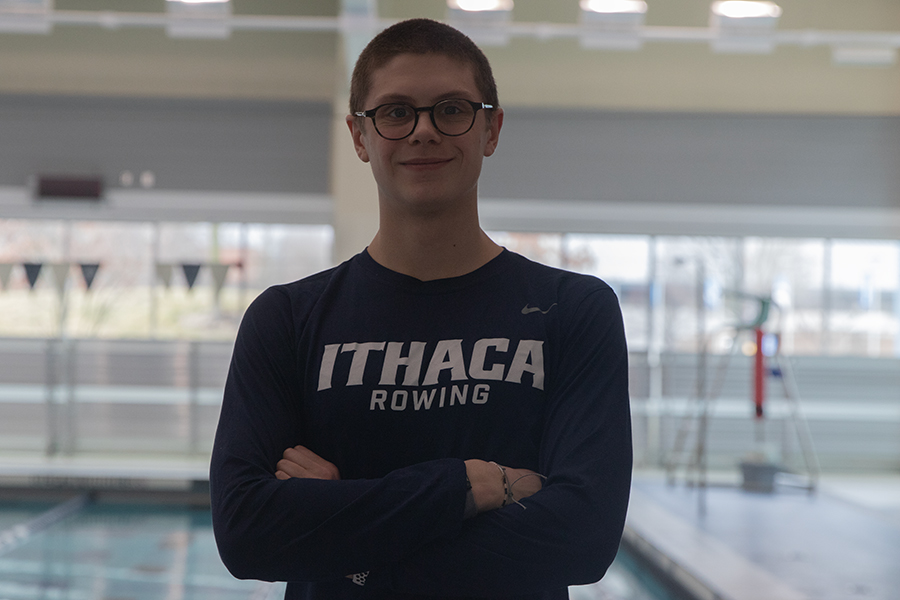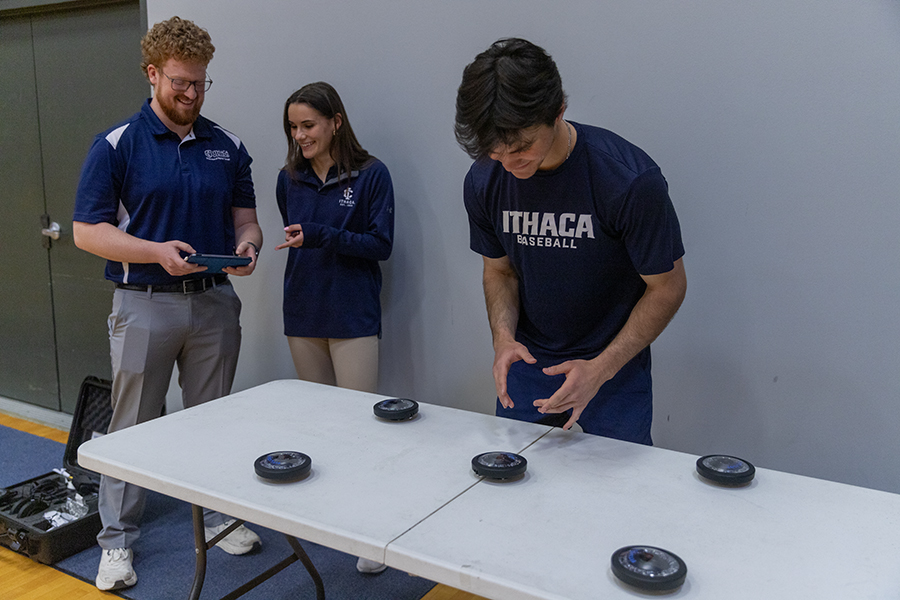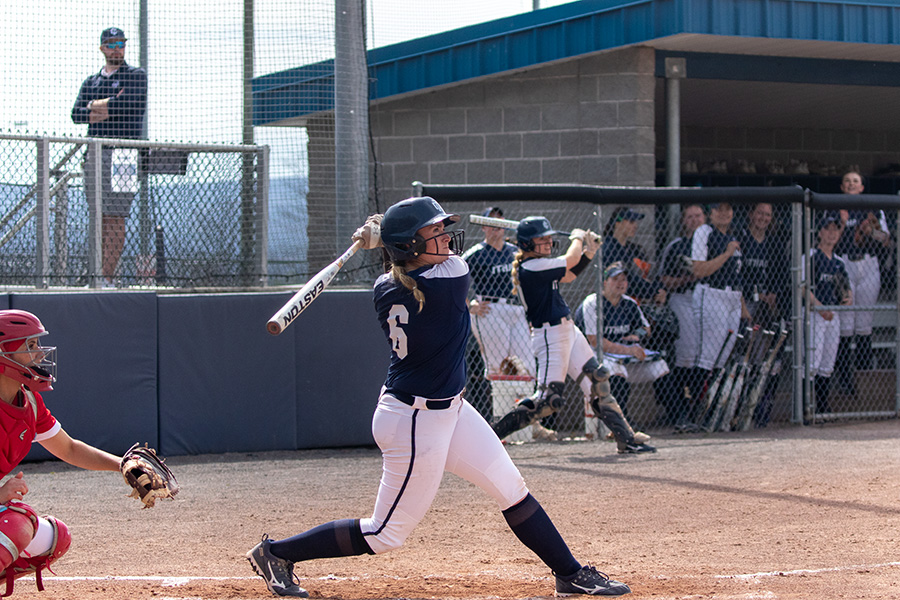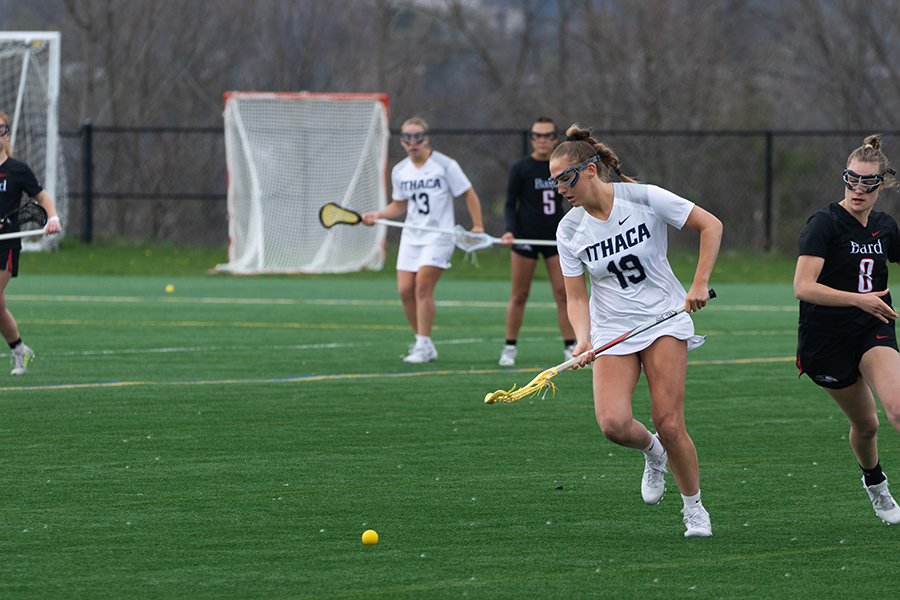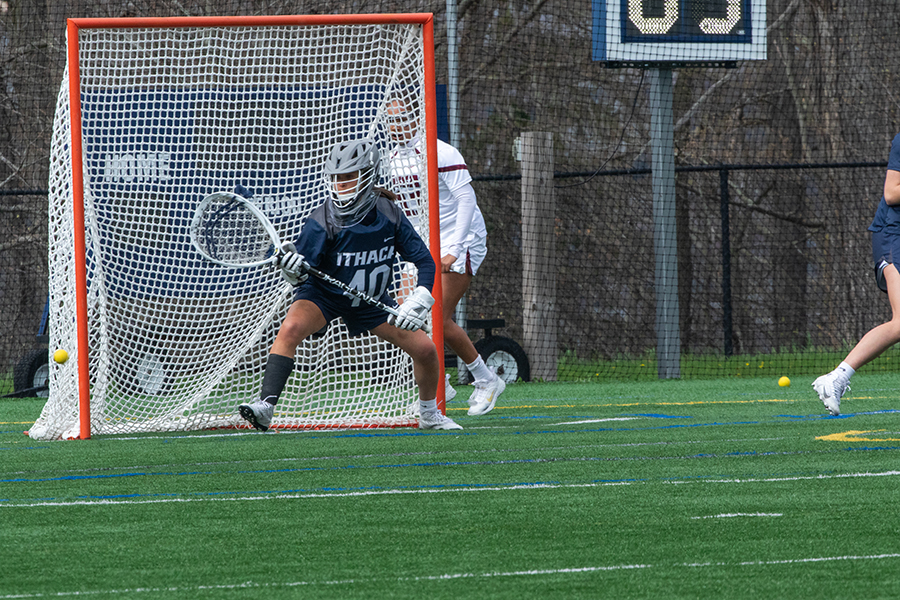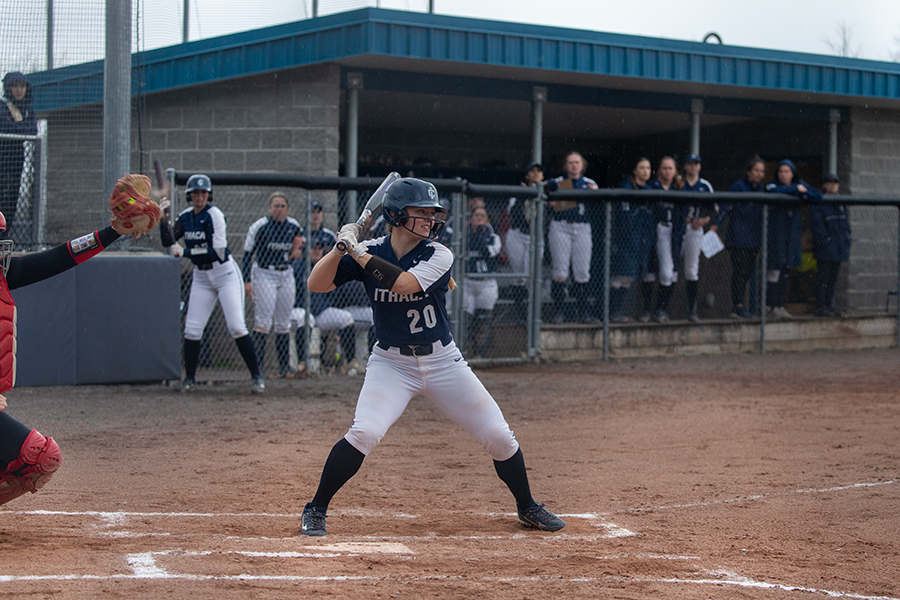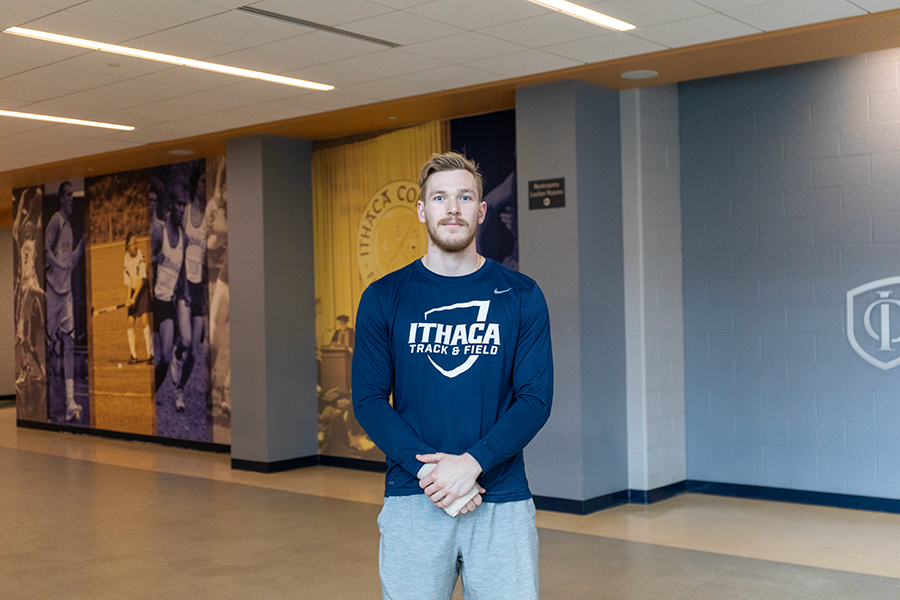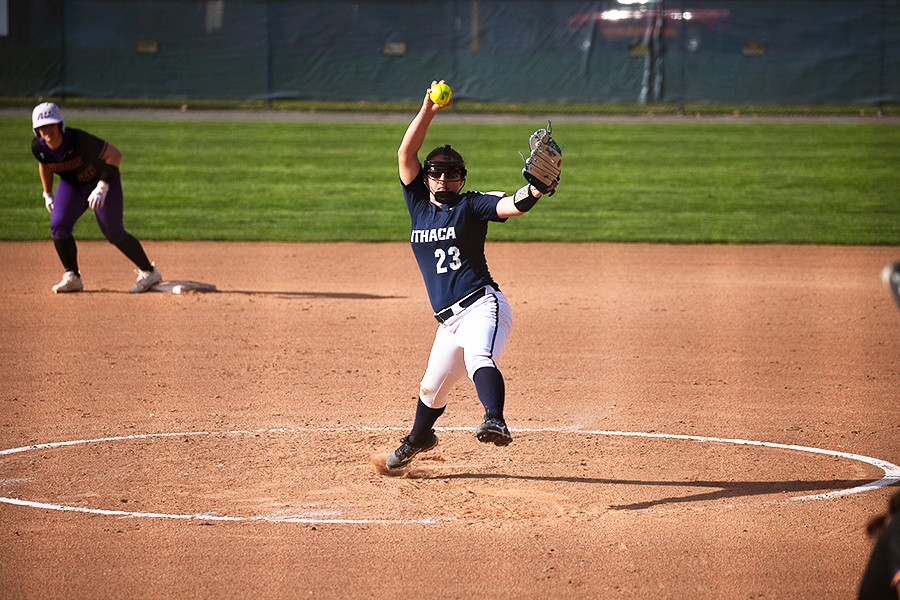Even at the Division lll level, Ithaca College often goes above and beyond to recruit high-profile, elite athletes from all over the country. But for the men’s and women’s rowing teams, team building looks a little different.
The rowing teams are a mix of members that have been recruited out of high school and those that have walked on or joined the team during their time at the college. While the men’s team is primarily made up of walk-ons, the women’s team is almost evenly split — the number of recruits versus walk-ons in the first and second varsity eight boats is split about half and half. The significant presence of walk-ons is thanks to the team’s dedicated recruiting techniques on campus, especially during move-in week.
Whether it be putting the boat on the quad or handing out flyers, the team puts itself out there to attract potential rowers. Then, the athletes reach out to students they see and actively recruit them to attend the first team meeting. Becky Robinson ’88, head coach of the women’s rowing team, said she looks for athletes that are not playing sports or people that never tapped into their athletic ability but have the potential to become competitive athletes.
“The walk-ons are what make us successful,” Robinson said. “Something that is absolutely a strength of ours that has kept us successful year after year is the ability to recruit rowers from campus.”
Robinson said the team advertises constantly. Much of the messaging is fostered in the mindset of joining a varsity sport with no experience necessary.
“We’ll train you, we’ll train to get fit and we’ll teach you how to row,” Robinson said. “I think it’s people wanting a varsity experience, and this is an opportunity that still exists at the college level where they can walk on and still be a varsity athlete.”
Graduate student Allison Arndt said that during her first week on campus, she walked around and was approached by someone on the rowing team. She had no prior experience, but she wanted to find new friends, so she gave rowing a chance.
“I wasn’t expecting to play a sport in college, but I’m really glad that I did,” Arndt said. “It’s been the best decision I’ve made in college.”
Robinson said the team is still slightly tipping the scale toward the walk-ons than the recruits, with more walk-ons joining the team every year.
“Our walk-ons are heavier in our freshman [and] sophomore years, and then it is about 50–50 by the time it’s junior [and] senior year,” Robinson said.
Robinson said students walking onto varsity sports is less common than it should be. When athletes leave or get cut from their sport, they often go to club sports instead of joining another varsity sport.
“In terms of performance, we’ve had people walk onto the team that were never athletes before in their lives and went on to be some of the top performers,” Robinson said.
Both the men’s and women’s teams offer students an opportunity to join a sport with no experience necessary. Sophomore Ashley Bailey said individuals who have never rowed before can join the team and be molded into accomplished athletes.
“We have a really close-knit team,” Bailey said. “You can walk on with no experience as a freshman and get up to competing at the NCAA Tournaments and stuff, which is pretty impressive.”
Walk-ons have the opportunity to step into a good culture. Justin Stangel, the men’s head coach, said that when the team welcomes walk-ons, he warns them that it will not be easy, but reassures them they can do it.
“Being a part of the team and being a student-athlete is something that looks really good on your resume, but it is also going to give you some pretty unique experiences in life,” Stangel said. “It can lead to some unwavering and unbending friendships even after leaving campus.”
Both coaches are huge proponents that everyone is valued and has their purpose on the team. Whether the individual is part of the boat that scores at a championship meet or not, what matters is their participation and dedication to the team.
“I think it’s really as simple as … from the fastest guy on the team to someone that might be near the bottom in terms of physiology, everyone is valued,” Stangel said. “Everyone has a role within the team.”
According to Stangel, any individual always has an opportunity to contribute to the team. They are always looking for the next generation of walk-ons.
“Recruiting, I think, is an avenue where we can continue to enhance the program, but we’re never going to shy away from that walk-on process,” Stangel said.
Arndt said that, unlike most sports, it does not matter when you decide to start rowing. There is a huge physical component that involves lifting the boat into the water, making it more practical to start later.
“I think rowing is really unique in the way that you can just pick it up at any time in your life,” Arndt said. “It’s one of the best parts about it.”
Robinson said she needs both walk-ons and recruits on her team. Recruits come in with the knowledge already and can immediately start making an impact on the team. However, with walk-ons a year is lost because they are just learning how to row.
“We allow freshmen a year to row because we know that we have to teach them the skill of rowing,” Robinson said. “After all my years of coaching, I have not figured out a formula to predict who’s going to be a good rower and who’s not going to be good because it all comes down to work.”
Bailey said there is a unique opportunity to grow quickly in the sport. Rowing is a repetitive movement that is all about learning and perfecting. The teaching starts out slow and is extremely important.
“It was easy to pick up,” Bailey said. “I feel really confident on the team now and feel like I have my own place.”
Junior Wesley Hoglin, a member of the men’s team, said some coaches prefer walk-ons over recruits because they are like a blank slate that can be shaped into an athlete. The motion of rowing always stays the same but the preferred technique changes depending on the coach’s preference and the area the sport is being practiced in.
“Some coaches like walk-ons because then they can mold them into the technique that they want to use as their brand to make the sport,” Hoglin said. “Other coaches like more experienced rowers because we already have the basic mechanics down.”
Sophomore Jonah Alefantis, a member of the men’s team, said he would recommend that others consider walking on to the rowing team. Although it is a time commitment and is going to hurt, you can have fun with it. Before every practice at the boat house, the team plays four square to get in sync.
“You’re either going to love it or you’re going to hate it because it’s a lot of time dedication and it will break your body,” Alefantis said. “Although the sport itself is not fun, you can have fun with it.”
Recruitment is a two-way street for the teams; while the coaches do their best to recruit athletes to the college, the team does its best to recruit athletes from campus. Stangel said that although the process is unique, walk-on athletes will continue to play a pivotal role in the team’s already established accomplishments.
“I’m excited for our group of walk-ons. I think we can continue to have success with them,” Stangel said. “We’re not going to shy away from that.”


